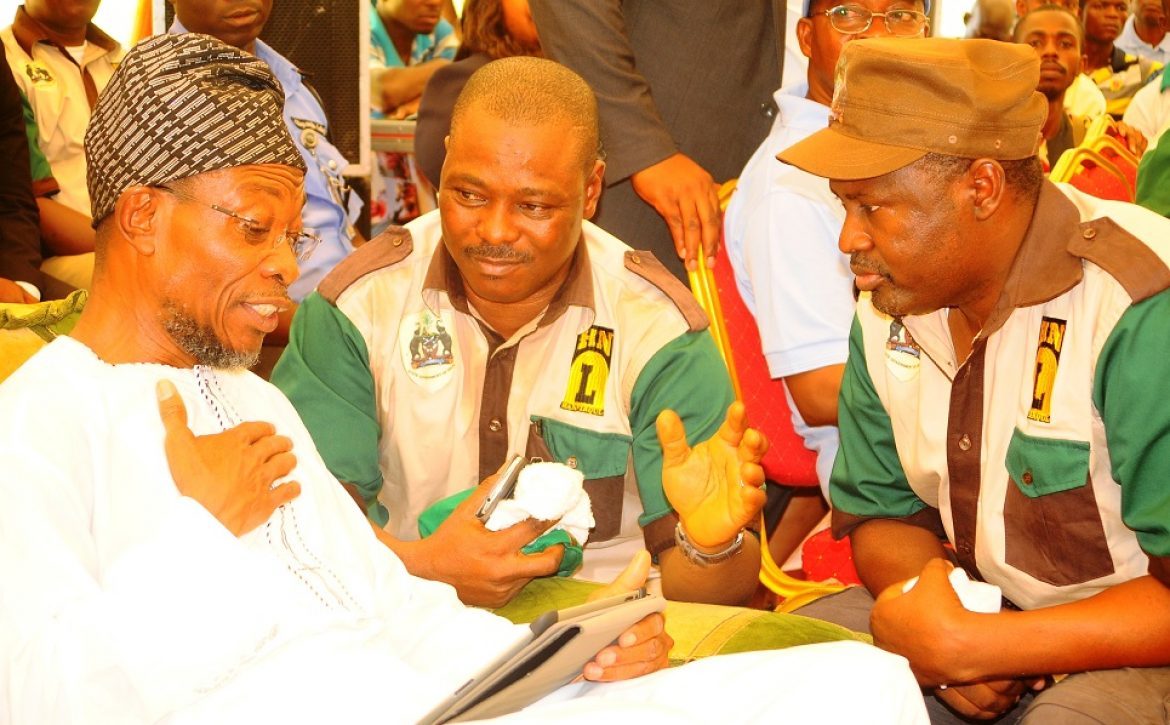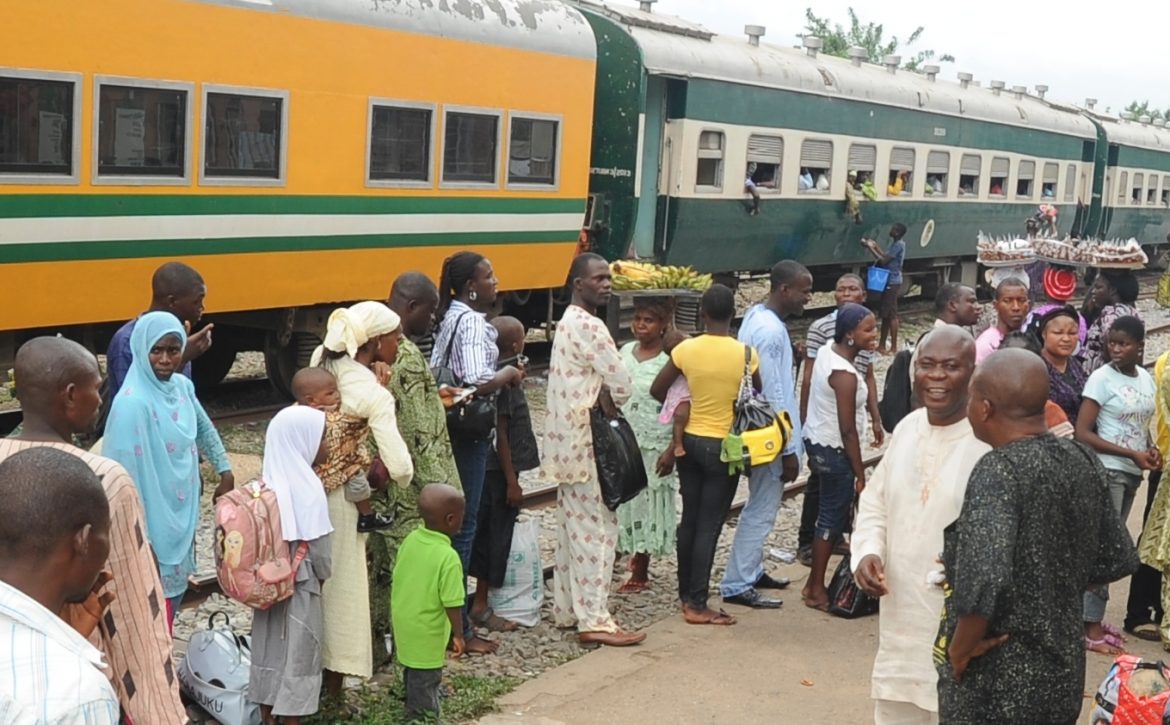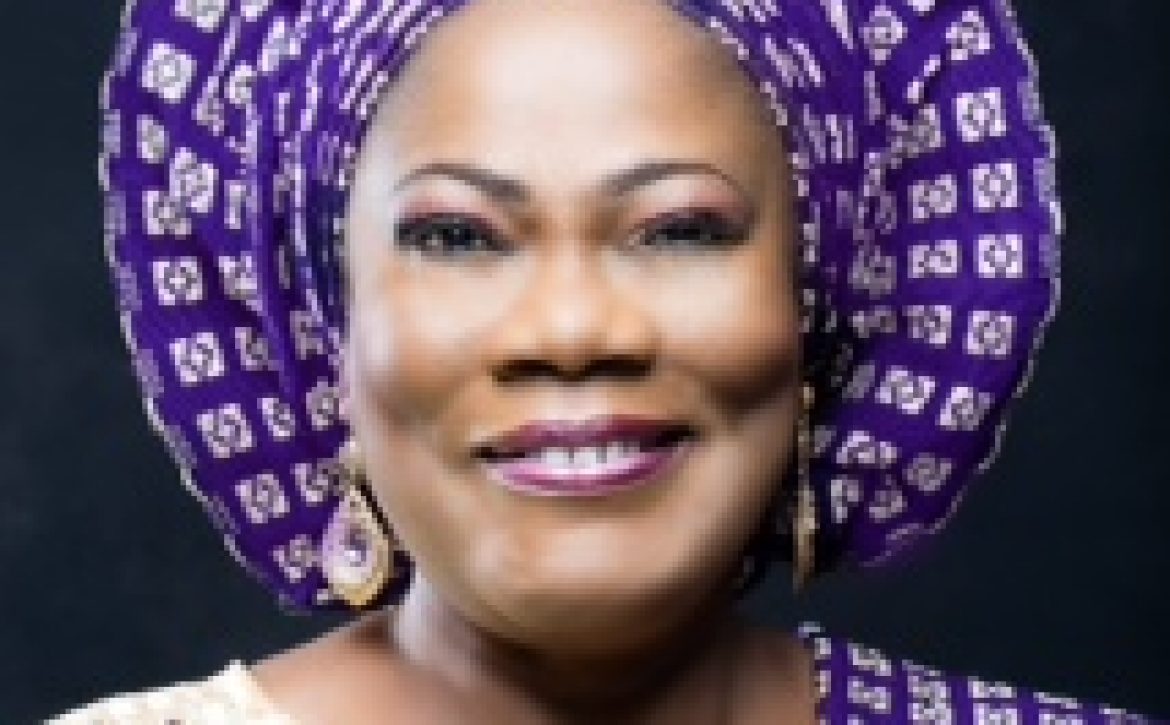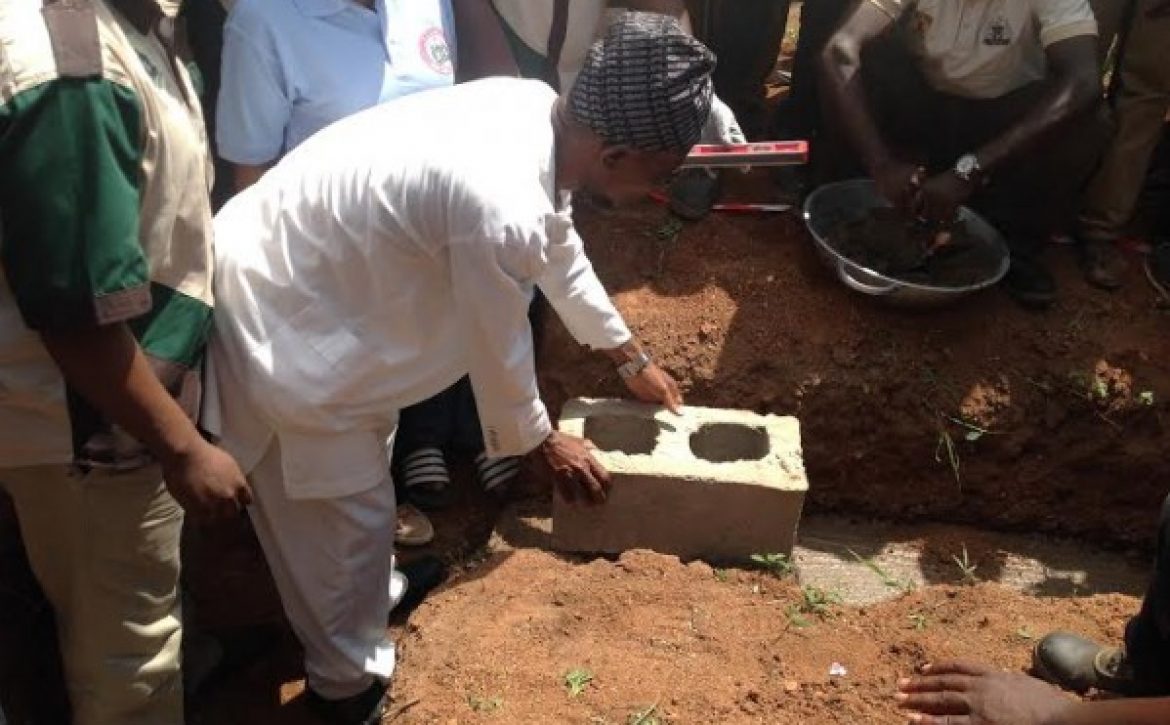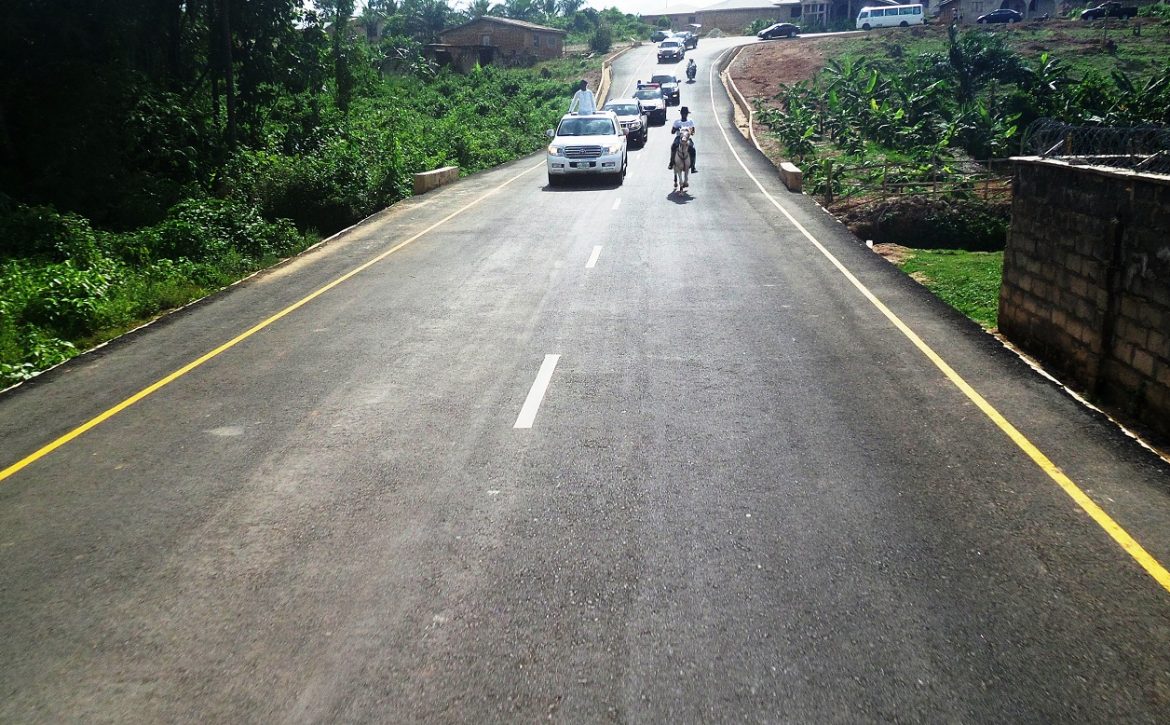
Osun’s Walk-to-Live provides therapy for health and politics. In no distant future, Osun will have the capacity for drawing tourists from all corners of the globe as its monthly health and physical exercise programme Walk-to-Live, now puts on the colour and trappings of a real tourist’s attraction. In deed, the recently held 15th edition of the event did not disappoint those who to witness it.
The Osun’s Walk-to-Live proved to be an excitement as even the elderly could not resist it. The spectacle of the 92 year old Madam Wulematu Alamu was an attraction to behold as she swung her frail torso in rhythmical gyration to the energising percussions of the mobile musical band.
It was Saturday April 5th, 2014. It looked like the first time the sleepy Edun-Abon town witnessed such a tumultuous crowd; a long winding procession snaking through it; waking the entire town up in a frenzy of activities that took away farmers from their farmsteads and traders from the shops. The towns along the route to Ipetumodu- Edun, Moro, Edun-Abon, Yakoyo-literally went alive in a celebrative mood that would be hard to forget.
“A o ri iru eleyi ri” (the crowd is strange to us) were the only words the old Madam Alamu could utter in Yoruba when this writer walked up to her to discover the source of her joy. She represented the mass of such old people and young ones who could not hide their excitement at the massive crowd that brought joy to their communities.
It was the 15th edition of the Osun Walk-to-Live physical exercise aimed at promoting one of the cardinal points of the Rauf Aregbesola administration –Healthy Living. On this edition however, a former Governor of Abia State, Dr. Orji Uzor Kalu, had joined Governor Rauf Aregbesola, who had the entire members of his cabinet with him for the programme.
“I didn’t know I would be able to complete the walk”, said the former Governor of Abia state when it was his turn to speak at the ……High School, Ipetumodu, where the walk terminated while confessing it was the first time he was undertaking such a rigorous but healthy walk in his life.
“But Madam Deputy Governor (referring to Mrs. Grace Tililayo Laoye-Tomori, Aregbesola’s deputy), kept urging and pushing me on and when I saw the way she was not looking tired, I summoned the courage to complete the exercise with your governor. Here I am, completing the exercise.”
Governor Aregbesola led other top government functionaries from Osogbo, the state capital in a 20 minute drive to Edunabon which was the starting point. It was from this point that a horde of organisations ranging from social to political waited for the Governor’s convoy to arrive for the proper take off of the 7.9kilometre walk through the towns.
Madam Alamu’s excitement was understandable. The resplendence of the colours brought to town by the event could not be lost on anyone. Apart from the T-shirt purposely made available for the participants, it was a harvest of many colourful attires as provided by various groups ranging from Oranmiyan, the socio-political organization whose platform saw to the emergence of Aregbesola in the first place; De Young Mandate group in green, association of food vendors who provide the meal for the school children under the state’s massive O-MEALs scheme that feeds about 300,000 pupils every school day in the state. These women were in their professional attires along others who donned various t-shirts provided by various political appointees and political associates of the governor.
The participants walked, they danced as the governor reminded them of the need for constant physical exercise to produce citizens with sound minds in sound bodies. But was this walk all for physical exercise? Even if that was the aim of the event has taken a life of its own garnering massive support for Governor Aregbesola’s government in the minds of the populace.
“It makes the Governor to be simply popular among the people,” says the Secretary to the State Government, Alhaji Moshood Adeoti. Anta Laniyan, popular Yoruba movie star, who joined almost 20 other actors and actresses in a short presentation at the event, said so many things are going for Aregbesola that would etch him in the consciousness of the Osun people.
“You cannot be more than a man of the people than this,” said the actor who also said he was sure no other name would be in the minds of Osun people when voting other than Aregbesola. “
For Dotun Oladipo, Publisher of The Eagle Online, “this has all the trappings of how to use sport or physical exercise to galvanize the citizenry towards participatory democracy. You cannot have a docile populace when you put in place programmes such as this that bring them out of their shells,” said one of the leading online publications in Nigeria. But seeing their governor walk with them, dance with them remove all those myth, which I think is one thing Governor Aregbesola is trying to demystify,” Oladipo said.
“How many governors can walk among their people the way your governor has walked without people throwing sachets of pure water,” asked Kalu. But we have walked today, there was no pure water. Rather, what we saw are cheers, waving of hands in demonstration of love for your Governor. I congratulate you Governor Aregbesola, for this wonderful innovation.”
But could Kalu have been wrong to call it an innovation? A senator from Ebonyi State in the South East part of Nigeria, Emmanuel Onwe could not but describe Walk-to-Live as “an innovation in the Nigerian Space.” We have friends in the PDP, we will tell them that, in Osun, from what we have seen, PDP is lacking. Senator Emmanuel Onwe
Much as Aregbesola would say the Walk-to-Live is to make his people healthy, the Saturday April 5th event further shows how much of confidence the administration has over its popularity with the people. The event took place on a day that the opposition Peoples Democratic Party was organising its governorship primaries at the state capital. But despite being a leading member of the Peoples Democratic Party, Kalu said this would not stop him from endorsing what he saw as the good works of Aregbesola.
“Omisore is my personal friend,” the former Abia State Governor declared point blank. He drew a deafening applause from the crowd. I am still a member of the Peoples Democratic Party, but what I have heard and seen about your governor made me to come out in the open to support good work. Iyiola Omisore is personal friend of mine, but I will always say the truth. Few days that I have spent here and the way his people talked about him truly showed that governor Aregbesola deserves another term to complete that good work that the Lord has used him to start during his first term.”
Of course, it was a platform to reel out the various achievements of the current administration in the areas of education, health, agriculture, roads and other infrastructure, tourism, security and job creations.
“The governor seems to have a good grasp of what it takes to hold a people together,” said Musliudeen Tijani Adekilekun, a Pharmacist based in Birmingham United Kingdom who hails from Ede and is eyeing a seat in the Federal House of Representatives for the Ede South/Ede North/Egbedore/Ejigbo Federal Constituency.
Adekilekun’s assessment of the exercise is that it brings together almost all the stakeholders in the polity “in a way that no section of the society is left out of the vehicle for mass mobilization. Women, children, old and young have one reason or the other to want to follow him,” Adekilekun said.
Comrade Biyi Odunlade, who has the responsibility for organizing the event, considers the Walk-to-Live one of the most important assignments he had handled in his entire career.
“It is one assignment that tasks one’s sense of organization, concentration and cooperation,” said Odunlade. To Odunlade, an Ife-born politician, the need to conscious of the dual purposes the event serves places major responsibility for ensuring success.
“Every edition of the programme is to me a major tool for making our people live a better, healthier live. And at the same time, the fact is not lost on us that Walk-to-Live has assumed a life of its own as a catalyst for mobilization. I think we are not failing in those major regards,” Odunlade said.
DAILY INDEPENDENT
Category: News
PHOTOS from the Turning of Sod Ceremony for the Construction of Ultra Modern Central Abattoir in
Osogbo, State of Osun on Wednesday 15-04-2014

From left, Governor State of Osun, Ogbeni Rauf Aregbesola; Managing
Director, Hanfriqul Nigeria Limited, Alhaji Kolawole Aresa and Commissioner
for Agriculture and Food Security, Mr Wale Adedoyin, during the Turning of
Sod Ceremony for the Construction of Ultra Modern Central Abattoir in
Osogbo, State of Osun on Wednesday 15-04-2014

Governor State of Osun, Ogbeni Rauf Aregbesola (2nd left) laying foundation
for the Construction of an Ultra Modern Central Abattoir in Osogbo, State
of Osun on Wednesday 15-04-2014. With him are, his Deputy, Mrs Titi
Laoye-Tomori (3rd left); Commissioner for Agriculture and Food Security, Mr
Wale Adedoyin (4th left); Managing Director, Hanfriqul Nigeria Limited,
Alhaji Kolawole Aresa (left); Sub-Consultant, Hanfriqul Nigeria Limited, Mr
Dapo Ademosu (5th left) and others.

Governor State of Osun, Ogbeni Rauf Aregbesola (left) laying foundation for
the Construction of an Ultra Modern Central Abattoir in Osogbo, State of
Osun on Wednesday 15-04-2014. With him are, his Deputy, Mrs Titi Laoye-Tomori
(2nd left); Commissioner for Agriculture and Food Security, Mr Wale
Adedoyin (3rd left); Sub-Consultant, Hanfriqul Nigeria Limited, Mr Dapo
Ademosu (4th left) and others.

Home Grown School Feeding and Health Programme (HGSFHP), launched in 13 states as a pilot project in 2005, was designed by the Federal Government to, among other things, address the high rate of out-of-school children. Since then, only Osun State could carry on, writes MOJEED ALABI tweet
Their mother, Mrs Juliana Adam, is one of the labourers standing every morning at Railway Line at Old Garage area of Osogbo, to be picked up by bricklayers in need of daily workers.
She lost her husband, a commercial bus driver, barely four years into their marriage; and since then, life has been very difficult for her. Hence, the decision to take the children to her mother in the village so that she could face life challenges alone.
However, with the modified school feeding project in public primary schools in the state, Adam had brought her two children to town and enrolled them in Grade 1 at the St. Michael Elementary School, Agowande, Osogbo. Similarly, Ilias Sarafa, upon the completion of his participation in the mandatory National Youth Service Scheme (NYSC), recently visited his hometown, Ilobu, in Irepodun Local Government Area of the state. He had made the unscheduled visit to his siblings who were schooling at home since their parents live in Ondo State where they are engaged in farming. But what Sarafa found out surprised him.
“I had some money on me when I visited them and I was afraid I might not be able to meet their needs because I expected them to have exhausted their foodstuffs and pocket money. But I was surprised to see them looking well-fed while also attending to their homework without being prodded.
“Even their kerosene was not exhausted, and their elder brother, who is in secondary school, said the food being served his three younger ones who attend Ansar-U-Deen Elementary School, Laaro, had sustained them. He said sometimes, when they could not finish their food in school, they bring the rest home,” Sarafa explained.
The story is the same in Ile-Ife, where 10-year-old Daniel Temitope was withdrawn from a private school in Abakaliki, the Ebonyi State capital and was enrolled at Baptist Central Elementary School, Ilare, Ile-Ife, because his parents felt children of their neighbours attending the public school in the town were doing well.
Daniel, who was in Primary IV in Abakaliki, was placed in Grade II in Ile-Ife, when he could not pass the test conducted for him to be admitted. Asked what his opinion was about the new school, Daniel said; “They give us food here and they don’t teach us in Pidgin English.”
In all the state’s primary schools, especially in the rural communities of Kuta, Ile-Ogbo, Oba-Oke, Obaagun, Ogbaagba, Ifon-Osun, among others, investigation revealed astronomical increase in primary school enrolment; the development was predicated on the state’s food project, which has been rechristened Osun Elementary School Feeding and Health Programme (O’Meal).
According to the deputy governor, who doubles as the Commissioner for Education, Otunba Grace Laoye-Tomori, the education summit organised in 2011 and chaired by the Nobel laureate, Prof. Wole Soyinka, formed the basis upon which the investment in education stands, especially the repackaging of the school feeding project.
She said: “When we assumed office in 2010, what we found the kids being fed with was not attractive to us.
“Apart from the cocoa drink which was very good, the food wasn’t rich enough and to address that, we asked nutritionists and dieticians from the Obafemi Awolowo University, Ile-Ife and the Osun State University, for professional recommendations on food that will be ideal for children in their formative years.
“That was meant to address the stunted growth we discovered among the kids, especially those in the rural areas and recommended were foods with carbohydrates, protein and fruits on a daily basis.
“Apart from feeding them, we also dewormed them every six months. Statistics as at the end of July 2013 showed that on a weekly basis, we use 15,000 chicken; 7,800 crates of eggs, 400 tons of fresh fish and we also slaughter 35 heads of cattle for them. “So we spend N14.9 million on the school feeding project on a daily basis.” According to her, the government now spends N3.6 billion annually.
Investigation also revealed that the effort is already yielding results, especially in the areas of reduction in hunger among the children; improvement in their nutritional status; increase in school enrollment, attendance and retention in the classroom. All these measures, the state government said were aimed at achieving the Millennium Development Goals (MDGs).
Investigation also showed that the programme, which started across the state’s 1,378 primary schools on April 30, 2012, with 155,318 pupils, increased enrolment by almost 25 per cent within a month.
By May of that year, the figure had increased to 194,258; a total of 38,000 pupils had been rescued from the streets.UNESCO’s report of January 2012 stated that Osun was the second state with the highest number of out-ofschool children in the South-West with Lagos, Ogun, Ondo and Ekiti states clearly ahead. But by July 2013, report of the National Bureau of Statistics recorded that Osun has the highest figure of primary school enrolment. Confirming the situation, a class teacher at Saint Michael Elementary School, Mrs Fasilat Ajiboye, told New Telegraph that the enrolment in her class at the beginning of the session was 40, but by the third week, it increased to 50. “As you can see, those pupils who are not putting on their school uniform are some of the pupils just admitted and that is because they have not been allocated their uniform, since it is given free by the state,” Ajiboye said. Similarly, one of the cooks, Mrs Eyinade Adebisi, said the initiative had helped the pupils greatly. According to her, on Wednesdays, when eggs are served on rice, the pupils eagerly look forward to their lunch time. “For us too, we are enjoying it. When we cook for the pupils on weekdays, we also work as caterers on weekends and that brings us extra money,” Adebisi said.
The former Minister of Education, Prof. Chinwe Obaji, during whose tenure the school feeding project was introduced, said the idea was in realisation of the central role of nutrition to education. According to Obaji, that informed the partnership with the New Partnership for African Development (NEPAD), World Food Programme (WFP), United Nations International Children’s Fund (UNICEF) and other International Development Partners (IDPs) to initiate it. Apart from resolving hunger crisis among children, retention in class, and other benefits, the former minister told New Telegraph that the initiative was also meant to promote local agriculture that benefits rural farmers by using locally-sourced foods, providing regular orders and a reliable income for local farmers. True to Obaji’s claim is the situation in Osun, where a total of 3,007 women were appointed as food vendors by the state, and 1,000 farmers drawn from across the nine federal constituencies of the state were assisted to plant red cocoyam. The red cocoyam, nutritionists advised the state government, is more appropriate for the kids than other types of yam. According to the Operation Officer of O’Meal, Mrs Olubunmi Ayoola, about 90 women farmers were recently trained in modern method of cultivating cocoyam and were offered financial support after their graduation to commence their farming job.Ayoola added that the eggs being produced in the state were no longer enough for the supply required to feed the kids and that the state had also encouraged farmers to bring their products for the ready-made market. She said: “To further enhance this programme, the governor recently signed the Osun State Elementary School Feeding Transition Strategy Plan document with the representatives of the Board of the Partnership for Child Development (PCD) of the United Kingdom.”
The development, Obaji said, was what the Federal Government had targeted when it introduced the project in the 13 states selected from the six geo-political zones and Abuja in 2005 on a pilot scheme. They are Bauchi, Cross River, Enugu, Imo, Kano, Kebbi, Kogi, Rivers, Ogun, Osun, Nasarawa and Yobe states. “I am very sure if the other states had not backed out, the same effects being experienced in Osun now would have been recorded in all the other states, and the case of the 10.5 million out-of-school-children would not have arisen at all. “That may have also helped in curbing the insurrection currently being experienced in some northern states, because I could remember Yobe in particular was added then,” Obaji said. To justify the importance of food to education, a recent visit by our correspondent to Makoko, a slum in Lagos, revealed a countless number of children who claimed they had never been to school because they hawk for their parents. Ayomide Muka is a 12-year-old girl and only child of his mother, who said she was not allowed to attend school because she had to take fish to Agege market every day. “My mother will not allow me to go to school because she says I must work for what I would eat,” Muka said.
But according to the former Dean of the Postgraduate College, University of Lagos, Akoka, Prof. Aloy Ejiogu, nations with the best education policies do not toy with the quality of education offered in their basic schools, regarded as the foundation of learning. Ejiogu, who cited Finland, United States of America and India as nations where educational revolution had tak- Sanctity of Truth Tuesday, My mother will not allow me to go to school because she says I must work for what I would eat Obaji Ayoola Atinmo Ejiogu Aregbesola Laoye-Tomori UNESCO’s report of January 2012 stated that Osun was the second state with the highest number of out-of school children in the South-West with Lagos, Ogun, Ondo and Ekiti states clearly ahead. But by July 2013, report of the National Bureau of Statistics recorded that Osun has the highest figure of primary school enrolment.
Confirming the situation, a class teacher at Saint Michael Elementary School, Mrs Fasilat Ajiboye, told New Telegraph that the enrolment in her class at the beginning of the session was 40, but by the third week, it increased to 50.
“As you can see, those pupils who are not putting on their school uniform are some of the pupils just admitted and that is because they have not been allocated their uniform, since it is given free by the state,” Ajiboye said. Similarly, one of the cooks, Mrs Eyinade Adebisi, said the initiative had helped the pupils greatly.
According to her, on Wednesdays, when eggs are served on rice, the pupils eagerly look forward to their lunch time. “For us too, we are enjoying it. When we cook for the pupils on weekdays, we also work as caterers on weekends and that brings us extra money,” Adebisi said.
The former Minister of Education, Prof. Chinwe Obaji, during whose tenure the school feeding project was introduced, said the idea was in realisation of the central role of nutrition to education.
According to Obaji, that informed the partnership with the New Partnership for African Development (NEPAD), World Food Programme (WFP), United Nations International Children’s Fund (UNICEF) and other International Development Partners (IDPs) to initiate it.
Apart from resolving hunger crisis among children, retention in class, and other benefits, the former minister told New Telegraph that the initiative was also meant to promote local agriculture that benefits rural farmers by using locally-sourced foods, providing regular orders and a reliable income for local farmers.
True to Obaji’s claim is the situation in Osun, where a total of 3,007 women were appointed as food vendors by the state, and 1,000 farmers drawn from across the nine federal constituencies of the state were assisted to plant red cocoyam. The red cocoyam, nutritionists advised the state government, is more appropriate for the kids than other types of yam.
According to the Operation Officer of O’Meal, Mrs Olubunmi Ayoola, about 90 women farmers were recently trained in modern method of cultivating cocoyam and were offered financial support after their graduation to commence their farming job. en place, said the school feeding projects had helped in no small measure to achieve such feat.
Also, the President, Federation of African Nutrition Societies, Prof. Tola Atinmo, said the school lunch programme had been in place in the United States as far back as 1946, saying the initiative had helped the country greatly.
Atinmo, who was part of a training programme on nutrition for school teachers in Lagos recently, advised teachers to encourage parents to always provide for their wards.
Commenting on the danger of neglecting children, the Executive Secretary of Lygel Youths and Leadership Initiatives, an Abuja-based non-governmental organisation, Mr Olalekan Oladapo, said it was unfortunate that in the midst of widespread corruption staring Nigerians in the face, many states could not introduce school feeding project on account of funding challenge.
Oladapo said his organisation would not hesitate to sue government, both at the federal and state levels, to ensure the initiative in Osun was emulated.
He said: “We need to encourage these kids to go to school these days, especially with the high rate of unemployment in the country.”
NEW TELEGRAPH

In its continued effort to make life meaningful and abundant for the people, the Government of Osun says its free Easter train service will begin on Good Friday.
A statement by the Commissioner for Commerce, Cooperatives an Empowerment, Mr. Ismail Jayeoba Alagbada, said the first train would take off from Iddo Terminus in Lagos to Osogbo by 10AM. on Friday.
The service, he added, would allow indigenes and people living in Osun and it’s environs to come home and celebrate the resurrection of Jesus Christ with their families and loved one.
Alagbada noted that the last round of the trip would be on Easter Monday when passengers would return from Osogbo to Lagos by 11AM.
According to him, the gesture is in line with Governor Rauf Aregbesola’s administration initiative to make life better for the people of the state.
He said, “The government of Aregbesola is a people-friendly government, a government totally committed to unlocking the latent potential in our people.
“For the fourth year running, free train ride has become a tradition in the state, particularly during festive periods.
“I want to use this opportunity to urge our people to grab this unique opportunity provided by the governor and join the ride to spend your Easter holiday in Osun where you stand the chance to get closer to the most endowed tourist land in the South West.”
The free train initiative is to convey indigenes of the state from Lagos and some cities in the South- West to and from Osogbo during festive seasons

 The seal order placed on Oduduwa University, Ipetumodu, Ife, over non-remittance of N173 million income taxes by officials of Osun State Internal Revenue Service has been lifted.
The seal order placed on Oduduwa University, Ipetumodu, Ife, over non-remittance of N173 million income taxes by officials of Osun State Internal Revenue Service has been lifted.
Oduduwa University, Ipetumodu is a private tertiary institution located in Ife North area of the state.
It will be recalled that leader of the government team to the university and Senior Special Assistant to the Governor on Revenue, Femi Balogun, said in a statement that “the tax liabilities covered back duty liability from 2006-2011 and the enforcement is the last stage of any tax process which is in line with Section 104 sub section (1) and (2) of personnel income tax act as amended.
“Tax payment is a law and a civic responsibility of all sundries; it is through this effort that government provides massive infrastructural development, security and other amenities. “The Revenue Department will stop at nothing to ensure that every individual performs his civic obligations.”
He advised the university to do the needful by paying up its tax liability to avoid further action of prosecution in a court of law.
However, a senior management staff of the institution who spoke to Daily Independent under anonymity confirmed that the seal order has been lifted following useful discussions with state officials.
Though the source did not disclose details of discussions or amount paid, academic activities have since resumed at the institution.
DAILY INDEPENDENT
 How will you react to the opposition to the state’s school merger and reclassification policies?
How will you react to the opposition to the state’s school merger and reclassification policies?
Well, we cannot discuss the merger of schools and reclassification policies without giving the details of the background to the major reforms and policies in the state’s education sector. When our administration came on board in 2010, what we met on ground was terrible and disgusting.
There was no data about the schools, infrastructure was nothing to write home about as classrooms were already caving in, and staff welfare or training was not in place. As at that time statistics revealed that only three per cent of our secondary school leavers were admissible to higher institutions.
That informed the government’s decision to hold an all-inclusive education summit, which took place precisely in February 2011, and was chaired by the Nobel Laureate, Professor Wole Soyinka. So, the reclassification is meant to actualise all the reforms. That is the answer in a nutshell.
However, for adequate understanding of the whole arrangement, we have reclassified the school system into three basic structures; the elementary, middle and high schools structures in accordance with the age group of the children which were classified as age six to nine; 10 to 14 and 15 to17 in that categories.
The reclassification involves the various components of the reforms we are carrying out for each of the categories in connection with the ages and mental capability, as well as the needs of the students.
To start with, in the elementary school the pupils are children in their formative stage of their lives. I want to emphasise here that whatever one puts in the foundation of a house determines what the future of that house would look like.
But there had been school feeding project before this administration came on board.
Of course, the free meal project was originally introduced to the State of Osun through the Universal Basic Education Commission (UBEC) Act of 2004.
The Federal Government started the pilot project in 13 states including our state in May 2006, and they advanced the funding expecting that all states of the federation should feed their primary school pupils at least once a day.
When we assumed offices in 2010, what we found out the kids were being fed with was not attractive to us, it was not even attractive to the children themselves.
Apart from the cocoa drink which was very good, the foods weren’t rich enough and to address that, we asked nutritionists and dieticians for professional recommendations for foods that will be ideal for children in their formative years.
That was meant to address the stunted growth we observed among the children especially those in the rural areas. And indeed, the recommended foods were those with carbohydrates, protein and fruits on daily basis.
The programme was originally tagged “Osun Home Grown Feeding Programme” but when we came on board we rebranded it and named it Osun Elementary School Feeding and Health Programme (O’Meal). Apart from feeding the children, we also deworm them and that is done every six months.
The statics as at the end of last session in July shows that on a weekly basis, we slaughter 15,000 fresh chicken, 7,800 crates of eggs, 400 tons of fresh fish and we also slaughter 35 heads of cattle for them.
The cost implication for this new session is not yet ready, but I am sure it must have increased because the reports have always shown tremendous increase in school enrollment.
So, we spent N14.9 billion on the school feeding project on a daily basis, and as at last school year we have spent N3.6 billion yearly.
What have been the effects of this investment on the school enrolment and the academic growth of the children?
UNESCO’s report of January 2012 indicated that Osun State was the second state in the South-West geo-political zone of the federation with the highest number of out-of-school children.
You can believe that Lagos, Ogun, Ondo and Ekiti States were clearly ahead of Osun State.
But today, with the report of the National Bureau of Statistics released on July 8, last year, the State of Osun has the highest figure of primary school enrollment.
And today our pupils are very attentive in class, they grow better and absenteeism has reduced to almost zero as against what we used to have before. Now, they anxiously await their meal.
When we started this programme on April 30, 2012, towards the end of the same month, we recorded an increase in enrollment of about 25 per cent because school enrolment increased by 38,000 pupils. We started with 155,318 pupils and by ending of May we already had 194,258 pupils on enrollment.
So, without this programme we would have lost 38,000 pupils who would never have been able to go to school.
But couldn’t the reforms be achieved without the reclassification and merger of schools?
The reclassification is in the best practice of the global standard. That is the way it is done where we copied our education system from. There is a big advantage in putting children in the same age brackets together in the same learning environment and this is the opinion of psychologists.
We have 1,738 elementary schools scattered all over the state whereas the population of the state is less than four million. However, most of these schools we have uneven distribution of teachers and facilities.
In some schools we have less than 30 pupils with 18 teachers, while in some we have more than 500 pupils with about six teachers. Now, the reclassification programme of the government is meant to address all such issues with the distribution of these model schools across all the local government areas.
For instance, before we came on board some schools were only collecting N200 per month as grant, but we have increased that to N400 per pupil per month and this runs into several millions of naira instead of about N25 million the previous administration was spending on school allocation.
So, as at July, last year we have spent about N856, 800,000 per year as school grants to our schools. Most of the school uniforms adopted by the government as observed are already fading, while there is controversy surrounding the school merger policy.
How is the government resolving all these?
We are already resolving that, and we are happy that our people are actually realising the fact that our efforts are aimed at reforming the ailing education sector.
You know it is natural for people to resist change especially changes that have not been experienced in the past and in a society where politicians don’t cultivate the habit of fulfilling political promises and where they are used to policy summersault. But, I want to assure you that is not going to be the case here.
There has been complaint about the uniformity in the uniforms as critics are insisting that it is difficult to differentiate the pupils from one school to another. What do you think about this?
Like I have mentioned, my prayer is that we progress in life. This state is moving forward and it is the same practice of uniformity in school uniforms that is being practiced abroad.
Through the badges and berets we can identify and differentiate the pupils and their schools. Let me say this, when we were young, all the Anglican schools used to have the same school uniforms all over the country and they were called Ionian colleges.
We will soon get used to it. In the United Kingdom (UK), it doesn’t matter whether your child is in London or Edinburgh, you can enter a shop and pick up his or her uniform.
But some of the uniforms are already fading, thus suggesting that the quality is poor?
We have noticed some of these things and more importantly especially that of the middle schools. We are working to change it. Meanwhile, what was initially provided was distributed freely but what we have done now is to engage about 10,000 of our youths, through the Omoluabi Garment Factory, which was set up in Abeere, by this administration as part of its employment creation programme.
TELEGRAPH

In fulfillment of its promise of constructing modern, semi motorized abattoirs in the Six Zones of the State, Governor of the State of Osun, Ogbeni Rauf Aregbesola will tomorrow turn the Sod for the construction of the Osogbo Central Abattoir.
In a statement by the Commissioner for Agriculture and Food Security, Hon. Wale Adedoyin, the abattoir in Osogbo will have the capacity to handle 300 heads of animals per day, expandable to 500 heads per day.
The statement stated further that the Osogbo Central abattoir which will create more jobs and wealth for the people of the State will alsohave facilities to slaughter, process, store meat and meat products from Cattle, Sheep and Goats.
According to the Commissioners, the administration of Ogbeni Rauf Aregbesola is committed to improving commercial activities in the state emphasizing that the government is concerned about making life more abundant for the generality of the people.
The release then enjoined all invited guests to be punctual at the venue to witness the very important and colorful event.
It will be recalled that Governor of the State of Osun, Ogbeni Rauf Aregbesola had last week Friday turned the Sod for the construction of the ultra modern Iwo Central abattoir.
Photos from the Governor’s inspection of the 15 Ilesa Township Roads before the commissioning in the State of Osun on Tuesday 15-04-2014

Governor State of Osun, Ogbeni Rauf Aregbesola leading the State
Executives to inspect the 15 Ilesa Township Roads before the
commissioning in the State of Osun on Tuesday 15-04-2014

Governor State of Osun, Ogbeni Rauf Aregbesola acknowledging cheers
from his supporters, during the commissioning of 15 Ilesa Township
roads in the State on Tuesday 15-04-2014

Governor State of Osun, Ogbeni Rauf Aregbesola leading the State
Executives to inspect the 15 Ilesa Township Roads before the
commissioning in the State of Osun on Tuesday 15-04-2014

Governor State of Osun, Ogbeni Rauf Aregbesola acknowledging cheers
from his supporters, during the commissioning of 15 Ilesa Township
roads in the State on Tuesday 15-04-2014

Governor State of Osun, Ogbeni Rauf Aregbesola leading the State
Executives to inspect the 15 Ilesa Township Roads before the
commissioning in the State of Osun on Tuesday 15-04-2014

Governor State of Osun, Ogbeni Rauf Aregbesola leading the State
Executives to inspect the 15 Ilesa Township Roads before the
commissioning in the State of Osun on Tuesday 15-04-2014

Governor State of Osun, Ogbeni Rauf Aregbesola leading the State
Executives to inspect the 15 Ilesa Township Roads before the
commissioning in the State of Osun on Tuesday 15-04-2014

Governor State of Osun, Ogbeni Rauf Aregbesola acknowledging cheers
from his supporters, during the commissioning of 15 Ilesa Township
roads in the State on Tuesday 15-04-2014

Governor State of Osun, Ogbeni Rauf Aregbesola leading the State
Executives to inspect the 15 Ilesa Township Roads before the
commissioning in the State of Osun on Tuesday 15-04-2014

Governor State of Osun, Ogbeni Rauf Aregbesola acknowledging cheers
from his supporters, during the commissioning of 15 Ilesa Township
roads in the State on Tuesday 15-04-2014

The Osun State Government said on Tuesday it had approved contract for the supply of 6,000 metric tonnes of fertiliser for the 2014 planting season.
The Commissioner for Information, Mr Sunday Akere, said this in an interview with the News Agency of Nigeria (NAN) in Osogbo.
Akere said that the contract had already been awarded.
“The State Agricultural Development Programme (OSSADEP) had requested for the procurement of 6,000 metric tonnes of fertiliser.
“Gov. Rauf Aregbesola has approved to procurement to facilitate food security in the state.
“The government has also ordered for 3, 500 metric tonnes of NPK at N6, 000 per bag and 2, 500 metric tonnes of Urea at N5, 800 per bag.”
The commissioner said that the state would not release any money to the contractor until the consignments were delivered, adding that government would ensure that the contract was executed to specification.
“The consignment will also be inspected by both the state’s Tender Board and the state’s Planning Committee before the payment is effected,” Akere said.


